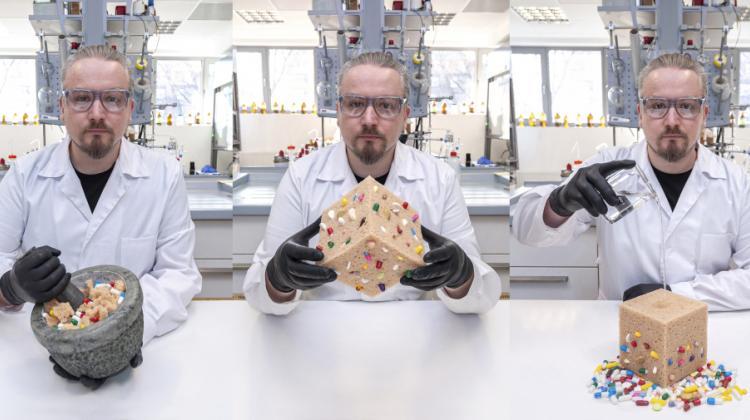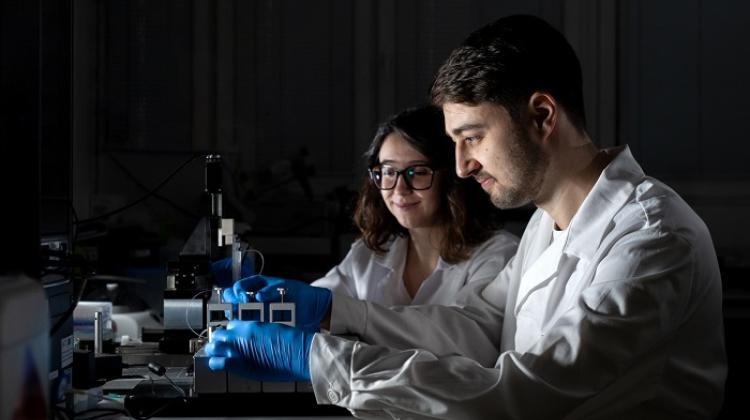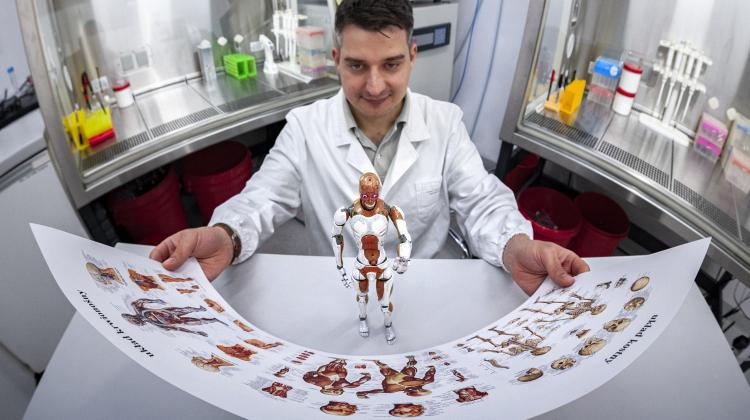New Method of Drug Encapsulation in MOF Materials
 Credit: Institute of Physical Chemistry PAS
Credit: Institute of Physical Chemistry PAS
Researchers from Warsaw developed a new, solvent-free method of encapsulating drug molecules in MOF (Metal-Organic Framework) porous materials.
The pharmaceutical industry today puts great emphasis on the search for new forms of drug carriers that would improve their precision and allow to control the release time. One of the very promising classes of materials that can provide a platform for carrying the drug in the body are organic-inorganic hybrid MOF materials. They have a large specific surface area and allow to adjust the shape, size and functionality of their pores.
Scientists from the Institute of Physical Chemistry of the Polish Academy of Sciences in cooperation with colleagues from the Faculty of Chemistry of the Warsaw University of Technology have developed a new, simple and solvent-free method of drug encapsulation in MOF materials, in which the metal complex acts as both a drug precursor and a building element of MOF material. According to the researchers, this method significantly improved the encapsulation of drug molecules in MOF-type materials and opened the way to obtaining many other 'drug@MOF' composites.
Currently used methods of filling the pores of MOF materials with drug molecules involve soaking a previously synthesized and activated MOF material in a properly prepared drug solution. This seemingly simple operation is time consuming and involves separate procedures such as the synthesis and activation of MOF material, soaking, washing and drying. The resulting materials have a smaller capacity than currently used drug carriers: mesoporous silicas or organic carriers.
'For many years, my team has been conducting intensive research on the design and synthesis of molecular precursors and their controlled transformation into hybrid functional materials. We employ a bottom-up strategy using both classic solvent methods and environmentally friendly mechanochemical methods', says Professor Janusz Lewiński.
'This is a quick and simple procedure, in which a mechanochemical reaction without the use of a solvent that allows to obtain a 'drug@MOF' composite in 20 minutes', says co-author Dr. Daniel Prochowicz.
'Mechanochemical synthesis is very simple. We need solid precursors and an electric mill to carry out the reaction. When milling substrates, mechanical strength does all the work for us', says Jan Nawrocki, a PhD student in Lewiński's group and the first author of the publication.
The researchers emphasize that their method using a copper ibuprofen cluster is just the beginning of research on more biocompatible materials based on materials including zirconium and iron.
'The road that will allow to use MOF materials in the pharmaceutical industry is probably long and winding, but if they are introduced to the market, our method, due to its simplicity of manufacture, will be very beneficial from an economic point of view', says Prochowicz.
PAP - Science in Poland
lt/ ekr/ kap/
tr. RL
Przed dodaniem komentarza prosimy o zapoznanie z Regulaminem forum serwisu Nauka w Polsce.


















